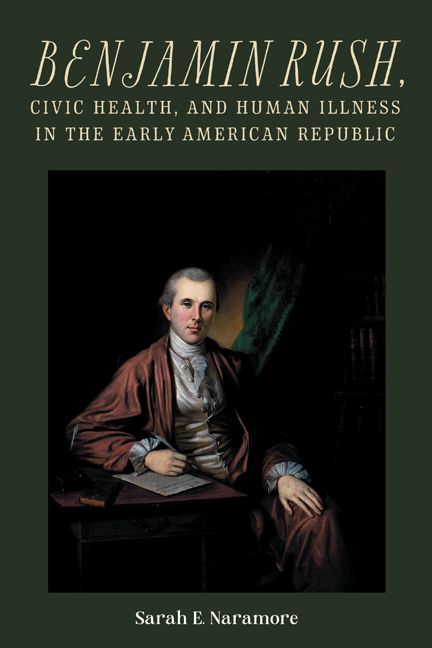5 - Explaining Variation in American Bodies
Published online by Cambridge University Press: 10 January 2024
Summary
Each year between 1789 and 1813, Benjamin Rush—like most medical school professors before and immediately after him—began the year with a special introductory lecture. Unlike subsequent topics that varied little from year to year, the introductory lecture changed frequently. Young men gathered to begin their journey into the medical profession framed by discussions that ranged from bedside decorum to a biography of Thomas Sydenham to veterinary medicine. One of the most common topics, however, touched on the operations of the mind and the diseases of the mind. Five out of Rush's sixteen published introductory lectures addressed these topics. The connection between mind and body was—and remains—an intriguing philosophical and physiological question. Most physicians and philosophers of the eighteenth century agreed on some link, but the extent to which the mind was rooted and altered by material concerns and how it operated were debated.
For Rush, the question of the health of minds and bodies took on added significance in the new republic. The bodies and especially minds of new citizens needed to be healthy for self-governance. Even those bodies and minds not associated with governance—women, people of color, and the poor— needed to support the social experiment of the new United States in auxiliary roles as caretakers, workers, and members of smaller communities. Teasing out the way different body-mind systems behaved in sickness and in health could, for Rush, help uncover their appropriate role in the environmentally temperate and politically republican nation.
One of the last essays included in the volume of introductory lectures, “Upon the pleasures of the senses and of the mind” included an appeal to family life as a preserver of health. Rush declared that married men and women lived longer than their single counterparts and lived happier lives. Women in particular were presented as in special need of a family. Subsequently, Rush presented marriage as a treatment for nervous disorders in both men and women. Their bodies (and minds) were different but considered complimentary. The joy of children, he implied, was most acute in mothers.
- Type
- Chapter
- Information
- Publisher: Boydell & BrewerPrint publication year: 2023

